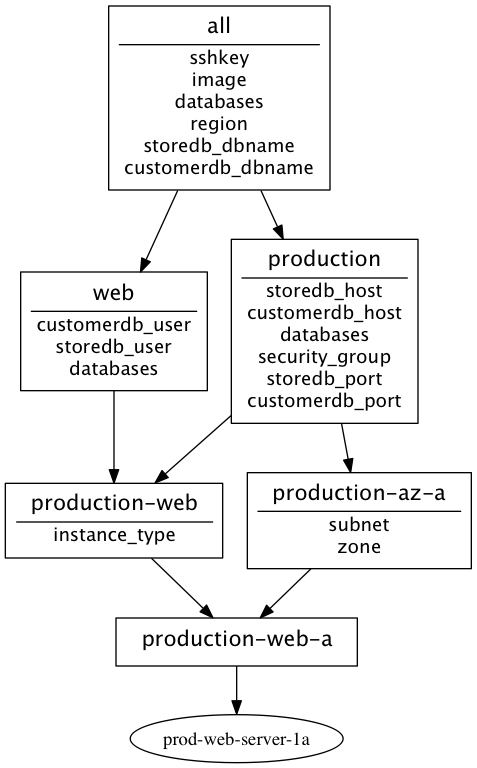ansible-inventory-grapher creates a dot file suitable for use by graphviz
Requires:
- a sensible Ansible setup (PYTHONPATH must include the Ansible libs)
- graphviz
pip install ansible-inventory-grapher
Usage: ansible-inventory-grapher [options] pattern1 [pattern2...]
Options:
-h, --help show this help message and exit
-i INVENTORY specify inventory host file
[/Users/will/.ansible/hosts]
-d DIRECTORY Location to output resulting files [current directory]
-o FORMAT, --format=FORMAT
python format string to name output files (e.g. {}.dot)
[defaults to stdout]
-q, --no-variables Turn off variable display in default template
-t TEMPLATE path to jinja2 template used for creating output
-T print default template
Using the example inventory in https://github.com/willthames/ansible-ec2-example, we can generate the dot files for two of the example web servers using:
bin/ansible-inventory-grapher -i ../ansible-ec2-example/inventory/hosts prod-web-server-78a prod-web-server-28a -d test --format "test-{hostname}.dot"
You can replace the default template (which can be seen by passing the -T variable to ansible-inventory-grapher) with a template file that can be
passed with the -t option.
The resulting graphs can then be converted to pngs using:
for f in test/*.dot ; do dot -Tpng -o test/`basename $f .dot`.png $f; done
Or the whole thing can now be done in one pipeline (only works for one pattern) straight to image viewer (imagemagick's display in this example)
bin/ansible-inventory-grapher -i ../ansible-ec2-example/inventory/hosts prod-web-server-1a | dot -Tpng | display png:-
This works with valid Ansible patterns now although only hosts and groups have been tested.
